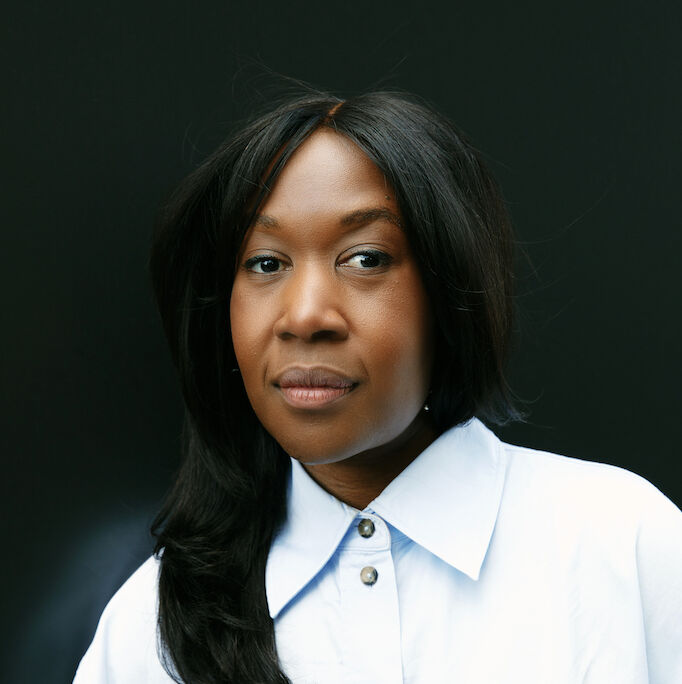

Interview Chronicler of Fashion History Justine Picardie
When she’s not contributing to our favourite Sunday morning reads, she’s filling our bookshelves too. A prolific author, she has written seven books on a diverse range of subjects, from fashion to life after death, and topped the bestsellers list for Coco Chanel: The Legend and the Life, which explores the life and career of one of the most important figures in fashion history.
Picardie’s latest book, Miss Dior, released this week, took an unexpected turn during development. Originally planned as a biography of the founder of the French luxury fashion house, Picardie decided to tell the lesser-known story of Christian Dior’s sister, Catherine, the inspiration behind the iconic perfume and a heroine of the Resistance. Before rushing off to pick up your copy, start your Monday with our chat with the acclaimed author and editor.
THE WICK: Who would be your ultimate cultural muse?
Justine Picardie: It’s so hard to choose a single muse, as I’m constantly discovering different authors and artists with every book that I work on; but the one I return to most often is Virginia Woolf. She explored so many different ideas in her writing and in her life, and her curiosity always inspires mine.
TW: Your latest book, Miss Dior, is the moving story of Catherine Dior. What can readers expect?
JP: I was originally planning to write a biography of Christian Dior, but I became intrigued by the silence surrounding Catherine, who was a heroine of the French Resistance, until she was captured by the Gestapo and deported to Ravensbrück concentration camp in Germany. Her brother created his first perfume, Miss Dior, as a tribute to Catherine — and my book explores the link between the trauma and suffering of the Second World War, and the romantic vision of femininity that emerges in Dior’s New Look, which transformed fashion in 1947. How could this beguiling fantasy take hold around the world, given the terrible events of the war? It’s a question I ask myself at the beginning of the book, and I hope that readers will accompany me on a quest that took me from the Belle Epoque to Occupied Paris, and Nazi Germany.
TW: You’ve written about Dior and Coco Chanel – two figures who turned fashion into art. How would you describe the link between fashion and art?
JP: Fashion and art sometimes share the same landscape, and occasionally overlap. A great designer can transcend fashion — as with Chanel’s original Little Black Dress, or her modernist design for the Chanel No. 5 bottle (which is now in the Museum of Modern Art in New York). And it is no coincidence that Christian Dior began his career as a gallerist, promoting modern art in the late 1920s. The Wall Street Crash and ensuing economic slump meant that he could no longer sell the Surrealist artists he championed, such as Salvador Dalí. I also think that there are artists who could have created successful fashion brands — Damien Hirst, for example — and designers who might have been artists, such as Alexander McQueen. Being in the audience at a McQueen show was sometimes like witnessing a piece of performance art.
TW: You’ve come from a traditional editorial and novel-writing background. In the art world the rise of the NFT has been a new chapter. What will be the NFT equivalent for writing?
JP:
The founder of Twitter, Jack Dorsey, has sold his first ever tweet for $2.9 million, which I suppose might constitute a written NFT. Or perhaps there is value in this tweet from an account called @Limericking:
The NFT market has grown,
As eight-figure auctions have shown.
The overall price is
A worse climate crisis
For art you pretend that you own.
“One of the scenes in Miss Dior was actually written in the V&A at night… when I was given the opportunity to wander alone through the superb Dior exhibition.”
TW: What’s been the highlight of your career so far?
JP: I’ve always been passionate about whatever it is I’m working on, and I always become obsessed and possessed by each chapter in my working life. And when I stop feeling inspired, then I know it’s time to move on and discover the next chapter.
TW: What’s your favourite culturally curious spot?
JP: I love the V&A — I’ve been going since I was a child, growing up in London, and it’s always seemed like an enchanted place to me. There’s something wonderfully uncanny about the costume galleries — the clothes displayed on silent mannequins have such an eerie quality — and one of the scenes in Miss Dior was actually written in the V&A at night, in 2019, when I was given the opportunity to wander alone through the superb Dior exhibition.
TW: Cultural quarantine – which book, album and artwork do you want with you?
JP: The book would be the complete works of Nancy Mitford — her letters included — which would cheer me up if I felt lonely. For similar reasons, I’d include The Beatles’ Greatest Hits, so I could sing along with them. As for the artwork: Vermeer’s ‘Woman in Blue Reading a Letter’, so that I could imagine the story of the mysterious correspondence.
TW: If you could have any artist to lunch, living or dead, who would it be?
JP: Sir Alfred Munnings was born in 1878, just a few miles away from where we live, so I’d be delighted to have him to lunch, and then go for a walk with him, preferably travelling back in time to see the local landscape as he saw it in his youth, when he first became an artist. He also painted my husband’s grandparents in 1920, so I’d like to talk to him about them.









